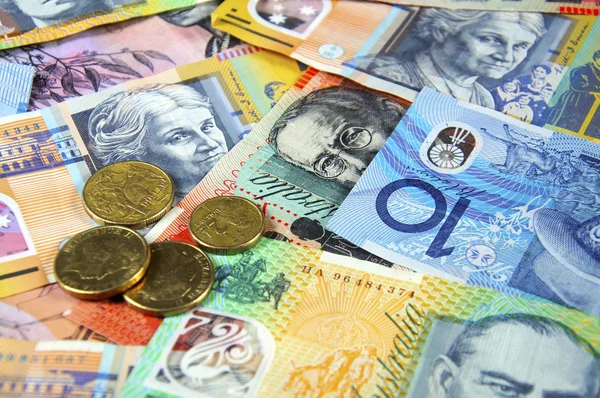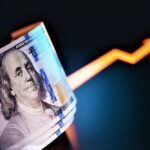The Australian Dollar (AUD) is enjoying renewed strength as it rides a wave of global risk-on sentiment and a weakened US Dollar (USD). The rally in AUDUSD reflects a confluence of macroeconomic, political, and central bank developments that have captured the attention of forex traders and investors alike.
Market optimism being largely driven by expectations of a dovish pivot from the US Federal Reserve (Fed) following a string of disappointing economic indicators and rising political tensions in Washington. Meanwhile, Australia’s economic picture, though still mixed, has shown signs of stabilization, offering the AUD additional tailwinds.
This comes amid renewed volatility in global risk sentiment, driven by shifting central bank dynamics, inflation concerns, geopolitical negotiations, and growing uncertainty surrounding US economic policy under the Trump administration.
Fed Policy Outlook Turns Dovish Amid Soft Data, Resignations, and Political Turmoil
The US Dollar has entered a weakening trend in the early August sessions, largely due to speculation that the Federal Reserve will cut interest rates at its September meeting. This follows a series of underwhelming US macroeconomic reports, including a weaker-than-expected July Nonfarm Payrolls (NFP) figure and a flatlining ISM Services PMI.
NFP Miss: The US economy added only 73,000 jobs in July, far below the consensus forecast of 110,000 and a significant downgrade from the revised 14,000 figure in June (previously 147,000). The unemployment rate ticked up to 4.2%, reinforcing the narrative that the labor market is cooling.
ISM Services PMI: Slipping to 50.1 from 50.8 in June, the ISM Services print barely held above the 50-mark, which separates expansion from contraction. Subcomponents such as employment and new orders also weakened, signaling slowing momentum in the services sector.
Rate Cut Expectations: Market pricing now reflects nearly 70% odds of a Fed rate cut in September, as inflation moderates and growth indicators falter. Some analysts are even pricing in two rate cuts by the end of the year.
Further denting confidence in the Fed’s independence is the unexpected resignation of Fed Governor Adriana Kugler. Her departure offers President Trump another opportunity to appoint a new voice on the central bank’s Board of Governors, potentially tipping the balance toward political alignment rather than data-driven decisions.
Adding fuel to the fire, Trump fired Bureau of Labor Statistics (BLS) Commissioner Erika McEntarfer following the disappointing jobs data, triggering alarm bells about possible interference in statistical reporting — a move that has stirred controversy across markets.
Trump’s Fed Appointments and Tariff Politics Add to Market Uncertainty
US President Donald Trump continues to influence financial markets through his bold executive moves and vocal preferences. He announced this week that he will appoint a new Fed Chair and replace Kugler by the end of the week, with names such as Kevin Hassett and Kevin Warsh circulating as potential candidates. Both figures are seen as politically aligned with Trump and more tolerant of lower interest rates.
This raises deep concerns about the Fed’s independence at a time when the institution is already under pressure from conflicting inflation data, labor market weakness, and looming recession fears.
In addition, Trump signed a sweeping executive order last week imposing new tariffs on imports from countries that failed to finalize trade deals with the US. Tariff rates ranging from 10% to 41% will apply starting August 1, impacting countries like Canada, India, and Taiwan. Notably, Australia was exempted from these hikes, a rare diplomatic win for Canberra and a positive signal for Australian exporters.
The US-China tariff détente also remains fragile. Despite recent talks in Stockholm, both sides failed to agree on extending the 90-day tariff pause, set to expire on August 12. The next move lies with President Trump, who has yet to indicate whether he will extend the pause or reintroduce punitive tariffs.
This ongoing uncertainty over trade policy and central bank independence is eroding investor confidence in the US Dollar and boosting appeal for higher-yielding currencies like the Australian Dollar.
Australian Data Offers Mixed Signals But Supports Recovery Narrative
On the domestic front, the Australian Dollar is finding strength in recent signs of economic stabilization. While still grappling with structural challenges, the latest batch of macro indicators points to gradual improvement in both services and manufacturing sectors.
Ai Group Manufacturing PMI rose by 4.9 points in July to -23.9. Although still in contraction territory, this marked a second month of improvement and a sign that the sector may be bottoming out.
Industry Index climbed 5.8 points to -3.2, its strongest showing in three years, signaling broader momentum across the private sector.
S&P Global Australia Composite PMI rose to 53.8 in July from 51.6, marking ten straight months of expansion and the fastest pace of growth since April 2022.
Services PMI also advanced, jumping to 54.1 in July from 51.8, reflecting strong consumer and business activity.
TD-MI Inflation Gauge surged 0.9% month-over-month in July the highest since December 2023 driven by supply chain disruptions and robust domestic demand.
Despite the signs of resilience, the Reserve Bank of Australia (RBA) is expected to cut interest rates by 25 basis points at its next policy meeting, potentially bringing the cash rate down to 3.60%. This expectation is driven by slowing core inflation (2.7%), rising unemployment, and moderating wage growth.
Nonetheless, markets have largely priced in the move, and with global risk sentiment improving, traders appear more focused on the relative weakness of the USD than the RBA’s dovish tilt.
China Data Boosts Regional Sentiment
Further aiding the Aussie’s rise is China’s latest economic data surprise. The Caixin Services PMI unexpectedly surged to 52.6 in July from 50.6 in June, easily beating forecasts of 50.2. This is a bullish development for the Australian Dollar, given Australia’s heavy trade exposure to China.
A stronger Chinese services sector suggests that domestic demand is stabilizing, potentially boosting demand for Australian exports such as iron ore, coal, and agricultural products.
With both China and Australia showing signs of economic resilience, the AUD poised to benefit from a favorable regional macro backdrop.
Technical Outlook: AUDUSD Challenges Key Resistance Levels
From a technical perspective, AUDUSD has rebounded firmly from the lows seen last week and is now eyeing the 0.6800 psychological level. A sustained break above this level could open the door toward 0.6860 and eventually the 0.6900 handle, which aligns with the 200-day moving average.
On the downside, immediate support lies at 0.6730, followed by 0.6675. A breach below these levels would negate the current bullish momentum and shift focus back to the 0.6600 zone.
RSI indicators remain neutral to slightly bullish, while the MACD shows early signs of a bullish crossover. Traders will be closely watching the RBA’s upcoming rate decision and US CPI data later this week for further cues.
Conclusion: Dollar Weakness Drives AUD Upside Despite RBA Caution
The Australian Dollar is capitalizing on a perfect storm of US Dollar weakness, improved risk sentiment, upbeat regional data, and Australia’s trade shield from new US tariffs. While the RBA may cut rates next week, this largely priced in, and the broader narrative of Fed easing and US political dysfunction is driving the currency pair higher.
As the market digests the Trump administration’s economic maneuvers, and the Fed’s potential shift toward policy accommodation, the AUDUSD pair could find further upside especially if US macro data continues to disappoint and Fed independence remains under scrutiny.
Disclaimer: This blog is for informational purposes only and does not constitute financial advice. Always conduct your own research and consult a professional advisor before making investment decisions.
[sc_fs_multi_faq headline-0=”h2″ question-0=”Why is the Australian Dollar rising against the US Dollar?” answer-0=”The AUD is rising due to growing expectations of a Fed rate cut, weak US economic data, political interference at the Fed, and stronger Australian PMI readings.” image-0=”” headline-1=”h2″ question-1=”Will the RBA rate cut hurt the Australian Dollar?” answer-1=”Not necessarily. Since markets have largely priced in a 25 bps cut, the AUD may not fall unless the RBA signals more aggressive easing.” image-1=”” headline-2=”h2″ question-2=”How is Trump influencing the Fed and markets?” answer-2=”By appointing Fed governors and dismissing economic officials, Trump is raising concerns about central bank independence and credibility, weakening the USD. ” image-2=”” count=”3″ html=”true” css_class=””]









